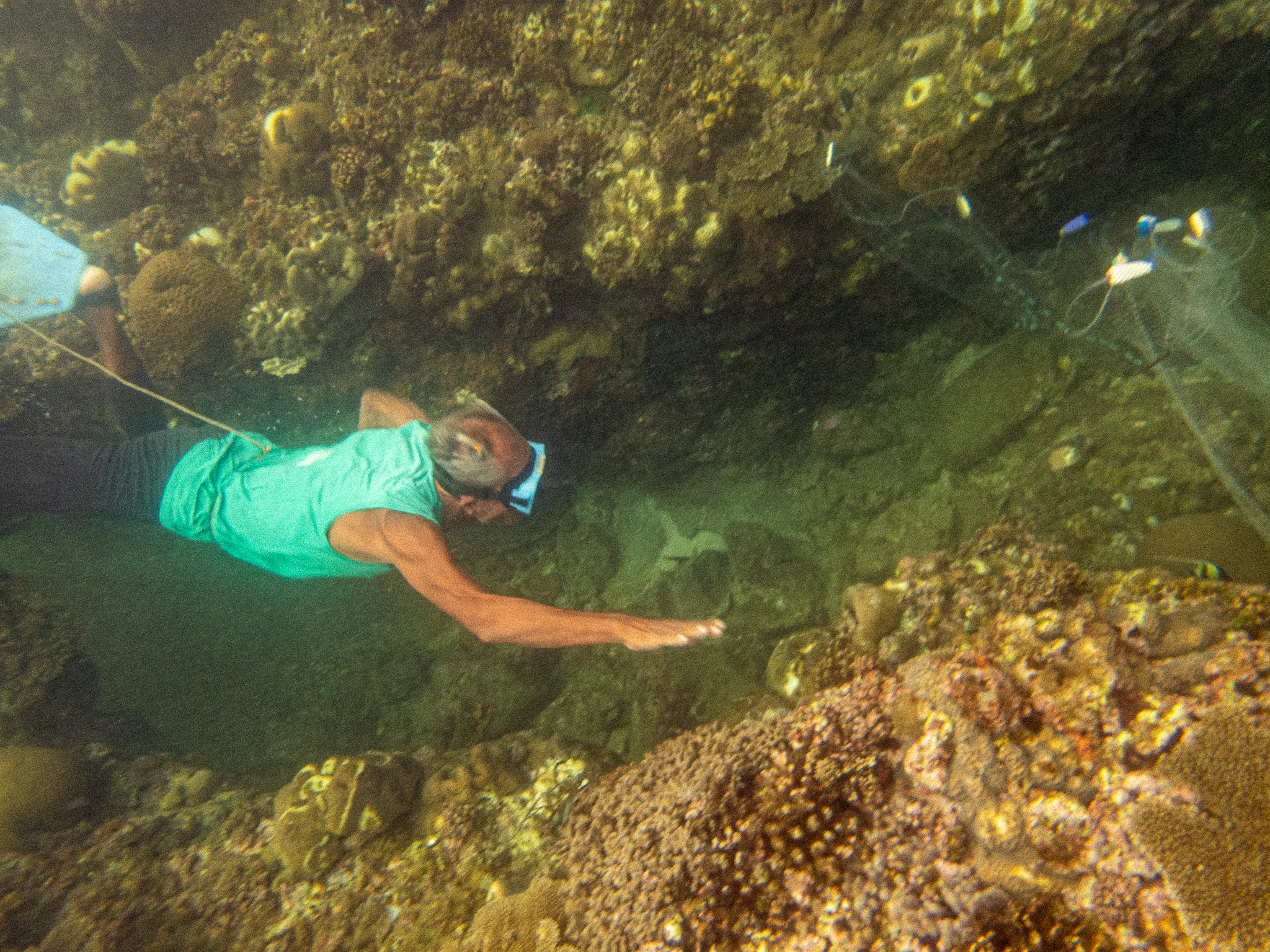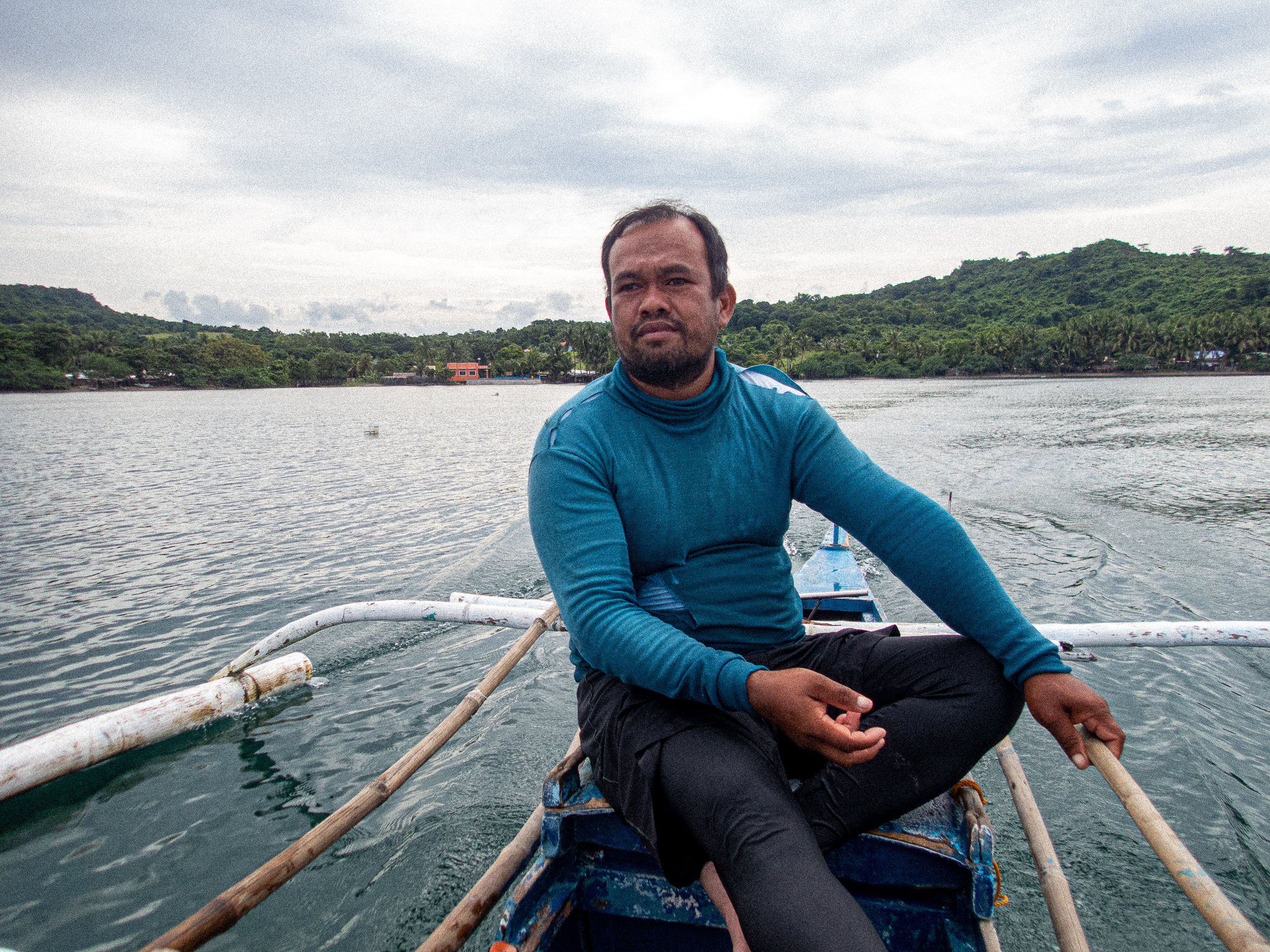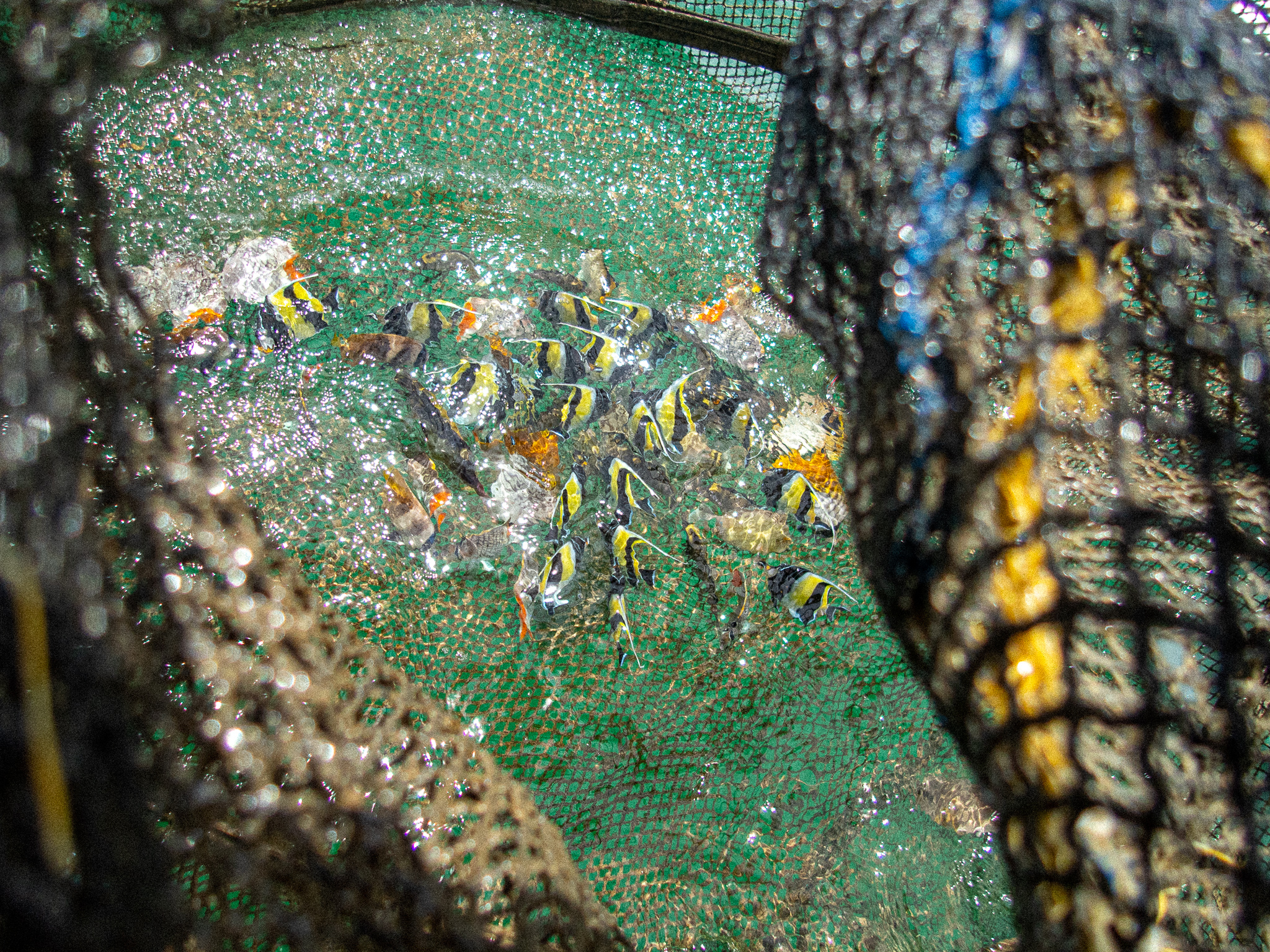Meet the Fishermen Who Caught the Fish in Your Aquarium
September 22, 2020It’s time to wake up. On Global Climate Day of Action, VICE Media Group is solely telling stories about our current climate crisis. Click here to meet young climate leaders from around the globe and learn how you can take action.
The seemingly inexhaustible wealth of the oceans have lured men from every corner of the world. At the tender of age of 13, Anecito “Mang Cito” Casilac explored the bountiful reefs of Cebu, an island province in the Philippines’ Visayas region, to learn the trade of aquarium fishing and earn money for his family.
With the Philippines at the apex of the Coral Triangle, its reefs are some of the richest in the world. With a high concentration of marine shore fish biodiversity per unit area, the country is at the center of the center of marine shore fish biodiversity. Because of its unique location, the Philippines, together with Indonesia, is home to the most reef fish traded in the market for aquaria. These are the attractive colorful creatures usually found in home aquaria and decorative hotel tanks. Catching them has been Mang Cito’s source of livelihood for almost 50 years.
“I will never forget my first earnings,” Mang Cito told VICE News while sitting by the shore waiting for lunch one afternoon in August. He earned PHP4 for three days of work in the 1970s, selling one reef fish for 10 to 50 centavos. That’s around PHP300 ($6.2) today when adjusted for inflation.
“Nemo is the most expensive one,” he said.
This was half a century ago, or about 30 years before the Pixar film Finding Nemo popularized the clownfish. Based on recent data, most wild clownfish sold in the United States are from the Philippines.

Mang Cito, then, traded education for a life at sea to continue providing for his family as the first-born son.
“Even though I only reached Grade 5, I was able to send my siblings to school,” he said proudly. He continued to learn the ropes of aquarium fishing from his relatives — developing every imaginative method to lure, trap, and catch the most colorful and unique fish species he could find, and sailing to many islands to find reefs with the most variety of fish.
Setting Sail
In 1993, at 27 years old, Mang Cito received an offer to be an aquarium fish diver in Honolulu, Hawaii. He would have earned five times more, but he could not stomach leaving his wife and five children. Utterly perplexed at turning down the opportunity, his uncle offered him another job. Still aquarium fishing but this time in Luzon, the Philippines’ biggest island, that was around an hour plane ride away from home.
“A 10-centavo fish in Cebu could be sold at 50 centavos in Manila,” he said. Middlemen buy reef fish at a cheaper price in Cebu. They shoulder the cost of shipping to Manila, before exporting it to rich countries like the U.S., United Kingdom, and Japan.
Mang Cito uprooted his entire family and settled in the shores of Batangas province, about two hours away from the capital Manila. Despite only traveling around 800 km in the same country, the Visayan-speaking Cebuanos found it hard to assimilate in the area, where Tagalog is the most common language.
“We were some of the earliest Cebuanos in the area,” he shared. Mang Cito’s son, Vincent Casilac was only 11 years old when they moved. He always had an affinity for the sea, which made the move to another coastal area more bearable.
However, the language barrier also led to discrimination.
“They would chastise us for fleeing from the Visayan islands just because we had nothing to eat anymore. They would call us ‘hampas lupa’ (dirt poor),” Vincent, now 37 years old, recalled.
He could not go to school because he did not understand Tagalog, so, he turned to the sea to make a living instead, just like his father.
Historically, the highest concentration of reef fish species could be found in the Visayas region. However, with all forms of fishing as the primary source of livelihood in the area, reefs started to degrade, resulting in a decline of reef fish biomass and species diversity.
In the latest assessment of the Philippines’ marine ornamental fish industry, over 60 percent of the total supply of these types of fish come from Region 4A, where Batangas is located. According to the same study, an estimated 9 million pieces of marine ornamental fish were sold in the market from 2016 to 2017, which included approximately 1,200 marine species. The most popular ones are green chromis, false percula (common clownfish), and firefish goby. Some threatened species were also recorded to be traded, including the endangered humphead wrasse.
Diminishing Returns
As soon as light touched the sky, Mang Cito and Vincent prepared their gear and their separate outrigger boats for another day of fishing.
“We need to take advantage of the calm seas in the morning as the wind shifts later in the day,” said Mang Cito. The father and son sliced through the placid waters of the bay with ease — passing by fellow aquarium fishers — and found a quiet spot nearshore. The waters were clear. Corals could be seen from the boat. They both geared up for a long day of fishing.
Goggles first, then wooden flippers. Mang Cito tied a long rope to his waist, attaching it to a makeshift raft. He got into the water and towed a canoe made of bamboo and styrofoam with water containers serving as compartments. One compartment was for his gear and the other two, both filled with seawater, were for the fish he needed to collect.

“The water today looks yellow,” Mang Cito said, gasping for air. The reef was brown with very few live corals in sight. Most were buried with sediments and covered with algae. And some corals were still bleaching, an effect of prolonged heating of waters from May to July. This trend in the rise of sea surface temperature was found to be directly proportional to rising greenhouse gases. There are now more frequent coral bleaching events, endangering many marine organisms that use corals as their primary reef-builders.
His son, Vincent immediately followed. As soon as he hit the water, he dove down and grabbed a Moorish idol fish by hand. “You have to be fast,” he said as he put his first catch of the day in the raft. It was Gill from Finding Nemo, one of Nemo’s tankmates. This species is very popular in the aquarium trade even though it has a low survival rate in captivity.
There were very few fish to catch that day. Even the brightly-colored reef fish did not stand out from the sepia-toned reef. Mang Cito readied his meshed barrier net with weights on the bottom side. He cast the net on the reef, locked on his target, and dove to chase another Moorish idol onto the net. He also caught the fish with swift ease by hand.
The increase in demand locally and globally has led to the rapid decline of fish stocks in the Philippines. In a recent study of small-scale fisheries, the average yield from coral reefs revealed to be three times higher than the maximum sustainable yield.
However, Mang Cito said that the sea always provides. “We never go home without a single catch,” he said. His son, Vincent, now with five children, could earn anywhere from PHP200 ($4.13) to PHP1,500 ($31) a day, depending on the season and the demand.
The overexploitation of seas due to human pressure and habitat destruction due to climate change are major threats not only to the environment but also to the people that heavily depend on nature’s bounty.

Net Gains
Taking the wild into the comforts of your own home is a huge responsibility and privilege. Aquarium fish-keeping is one of the most popular hobbies around the globe. And with the development of new technologies for easier and cheaper upkeep of marine aquaria, there is also a direct correlation with the demand for reef fish over the past decade.
“When I started, we never cared about exhausting the reef fish. We just collected whatever we could for profit based on the orders of our boss,” said Mang Cito.
“There were no guidelines then.”
Since the 1960s, cyanide fishing has been the most effective and easiest method to collect the stealthy reef fish. The destructive method was developed in the Philippines for the sole purpose of collecting live fish for the aquarium trade. Sodium cyanide is put in squirt bottles to stun the fish in the wild, making it easier for the diver to grab or scoop them with nets. This is highly detrimental not only to the health of the fish but also to the health of the corals.
In 1989, non-governmental organization Haribon Foundation spearheaded the Philippine Netsman Training Program to solve the growing problem of cyanide fishing in the Philippines. This led to a wide-scale program to shift aquarium fishers’ preferred mode of collection to fine-meshed nets rather than cyanide. Among the participants, only 29 percent were said to have been fully converted. In 2014, the Revised Fisheries Code or Republic Act No. 10654 also banned the use of fine mesh nets. Mang Cito has received alternative, approved fishing gear from the Bureau of Fisheries and Aquatic Resources (BFAR).
“We have enough regulations, however, strict implementation through sufficient resources such as manpower, transportation, and others should be taken into consideration,” Marygrace Quintero of BFAR’s Fisheries Inspection and Quarantine Division told VICE News.
Data collected on the marine aquarium fishing industry in the Philippines is still a huge underestimate of the complete picture. Coral reef fish are hunted down for both food and aesthetic purposes.

“The only regulation implemented in the municipality is no fishing in marine protected areas. In a way, aquarium fishing is a good thing because there would be less competition for fishing for consumption. However, there is no monitoring tool or scheme in place,” Alvin Jonson, municipal environment and natural resources officer of Lian, Batangas, told VICE News.
Coastal communities are highly resource-dependent communities. Hence, the degradation of their environment and depletion of their resources are correlated to their quality of life. Mang Cito now realizes the importance of imposing limitations to his catch, as he saw reefs degrade over the years.
“There was much more fish before because there are also fewer fishers,” Mang Cito said. “Today, there are more fishers with their own strategies and methods to catch fish. The right methods are not enough to earn a living.”
There is a large income gap between Filipino diver-collectors and the middlemen or exporters of these fish. For example, for every cleaner wrasse caught, exporters pay divers PHP6 ($0.12), but this is sold for $25 on popular aquarium websites.
Mang Cito admitted to having left cyanide fishing behind and now catches fish of the right sizes, to ensure that the young could still grow and continue to multiply. But even these independently-imposed limitations are insufficient to secure fish stock and livelihood for generations to come. And, as the demand for marine ornamental fish from developed countries continues to flourish, reefs in the tropics are left almost barren.

